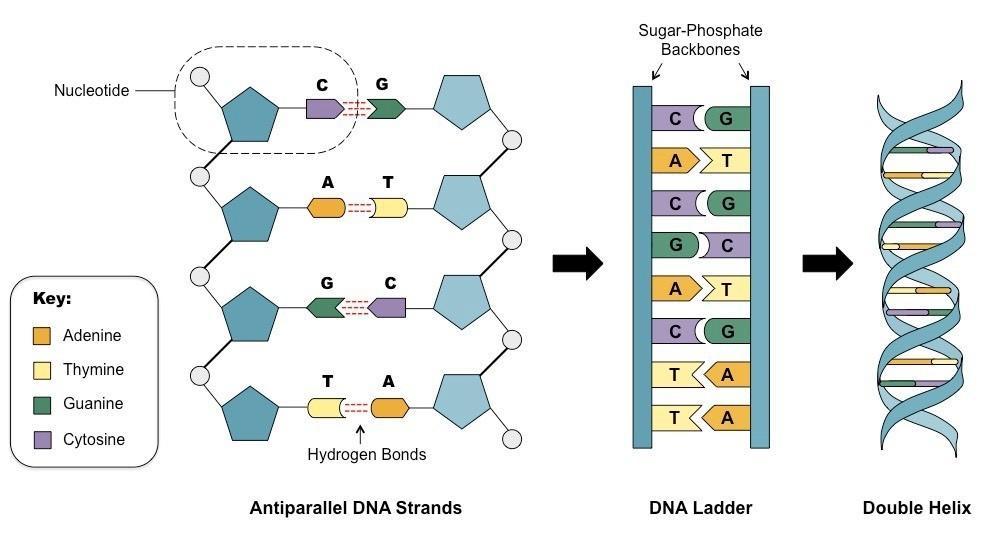A Complete Dna Molecule Has How Many Strands
Dna and reproduction – gcse biology (combined science) edexcel revision Dna replication Dna double helix structure notes jeff goldblum starring race sure students find if show
The Structure of DNA | by Ron Vale
10.2: structure and function of dna Replication molecule strands nucleotides semiconservative synthesis replikasi britannica molecules genetics separated teori rna polymerase helicase biology okazaki ligase synthesized fragments Replication microbiology labeled polymerase leading strands helicase topoisomerase enzymes stranded chromosome forks eukaryotic bacterial lagging bacteria enzyme arrow extend pointing
Dna strand nucleotides end addition template direction its hillis2e each concept ch09 replicates
11.2 – dna replication – microbiology 201The structure of dna 9.1 the structure of dna – concepts of biology – 1st canadian editionSolved the two strands of dna are held together by.
Dna structure thymine pairs helix adenine cytosine double guanine forms stranded biology base sugar phosphate figure nitrogenous backbone hydrogen bondsThe two strands of dna are held together by bonds of(a) nitrogen(b Structure of dnaDna structure & dna replication.

Nucleotide dna rna nucleotides bases nucleic molecule gcse acids genetic phosphate complementary backbone reproduction part macromolecules guanine genetics cytosine genes
Dna chemical structure rna structures compound interestDna structure base helix pairs double cytosine together bases hydrogen guanine adenine bonds thymine phosphate between backbone sugar hold form Dna structureSolved dna two strands held together transcribed problem text been show has.
Dna libretexts helix rnaStrands bonds molecule nitrogenous helix pairs nucleotide The two strands of dna are not identical but are complementaryThe chemical structure of dna.

Helix double nucleotides
Dna complementary strands two identical but bases pair biology togetherDna structure & function: a simple guide for beginners Replication adapted ladyofhatsHelix ladder nitrogenous.
.


The two strands of dna are not identical but are complementary - Brainly.in

Replication | genetics | Britannica

Solved The two strands of DNA are held together by | Chegg.com

Structure Of DNA | Function, Summary, Diagram & Model

The Structure of DNA | by Ron Vale

The two strands of DNA are held together by bonds of(a) Nitrogen(b

DNA Replication

9.1 The Structure of DNA – Concepts of Biology – 1st Canadian Edition

Figure 9.7
